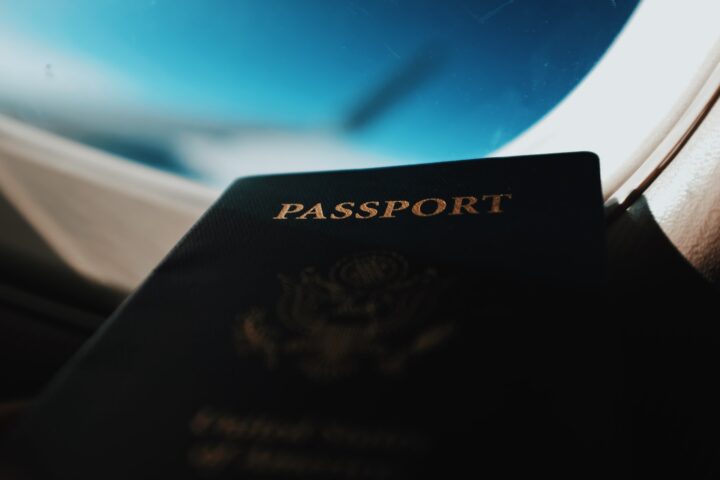Dual Identity: Exploring the Psychological and Emotional Aspects of Holding Two Passports
In today’s connected world, the idea of having a dual identity is more common than ever. Holding two passports is more than a legal status; it’s a complex journey that blends the emotional and psychological aspects of who you are. In this blog post, we’re going to explore what it means to live with dual identities, looking at the challenges and rewards, as well as the unique viewpoints it offers.

The Legal Landscape
Understanding Dual Citizenship
Dual citizenship, also known as dual nationality, is a legal status in which an individual is a citizen of two countries. While the specifics vary from country to country, more nations are recognizing and allowing citizens to hold dual citizenship. This legal aspect lays the foundation for the complex web of identity that individuals with two passports navigate.
The Psychological Rollercoaster
Embracing Duality
Owning two passports can feel like an emotional ride, as you navigate your sense of belonging to two different worlds. There’s the deep-rooted connection to your birthplace, with its cultural traditions and family bonds. Then, there’s the pull of another country, with new friendships, experiences, and a different cultural vibe. This duality shapes your identity in unique ways, offering a rich tapestry of experiences and perspectives.
Identity Crisis
At times, the dual identity can lead to an identity crisis. Who are you at your core? Which cultural values do you hold most dear? These questions become poignant as individuals try to reconcile the sometimes conflicting aspects of their dual identity. It’s not a simple case of blending two cultures seamlessly; rather, it’s a nuanced dance between two worlds.
Benefits and Challenges
The Rich Tapestry of Cultural Exposure
One of the undeniable benefits of holding two passports is the rich tapestry of cultural exposure. From childhood traditions to adult perspectives, individuals with dual citizenship often possess a broader understanding of the world. This exposure fosters tolerance, adaptability, and a unique ability to connect with people from various backgrounds.
Language as a Bridge
Language, a cornerstone of culture, becomes a powerful bridge for those with dual citizenship. Being fluent in two languages opens up new channels of communication and understanding. It’s not just about speaking words; it’s about embodying the nuances and subtleties that come with each language, creating a truly bilingual and bicultural experience.
The Flip Side: Navigating Legalities and Responsibilities
While the benefits are evident, dual citizenship also comes with its challenges. Navigating the legalities of two countries, understanding tax obligations, and dealing with potential military service requirements can be daunting. The responsibilities that come with holding two passports require careful consideration and often demand meticulous planning.
Cultural Juxtapositions
Celebrating Traditions
The celebration of cultural traditions is a beautiful aspect of dual identity. Individuals may find themselves seamlessly moving between traditions, celebrating holidays, festivals, and rituals from both countries. This unique blending creates a mosaic of experiences that enrich the individual’s life.
Navigating Social Expectations
However, navigating social expectations can be tricky. Individuals may find themselves caught between the expectations of two cultures, each with its own set of norms and values. Striking a balance and staying true to oneself becomes a delicate act of diplomacy.
The Emotional Landscape
Family Ties and Distant Shores
Emotionally, having two passports often means maintaining strong ties with family in one country while building a life in another. The emotional landscape is marked by a constant negotiation of distance and closeness, as individuals find ways to stay connected with loved ones separated by geographical boundaries.
Roots and Wings
The metaphorical dilemma of having “roots” in one country and “wings” in another is a sentiment echoed by many with dual citizenship. It encapsulates the simultaneous pull of heritage and the desire for exploration and personal growth. Navigating this emotional dichotomy requires resilience and a deep understanding of one’s own desires and priorities.
Practical Tips for Navigating Dual Identity
Embrace Both Cultures
Rather than viewing dual identity as a conflict, embrace the beauty of both cultures. Celebrate the unique aspects that each country brings to your identity, creating a harmonious blend that reflects your rich tapestry.
Seek Support
Connect with others who share a similar experience. Whether through local cultural groups, online communities, or social events, finding a support system can help navigate the challenges and celebrate the joys of dual identity.
Stay Informed
Given the legal complexities, staying informed about the laws and regulations of both countries is crucial. Regularly update yourself on changes in immigration policies, tax requirements, and any other legal obligations to ensure a smooth dual citizenship experience.
Conclusion
In the intricate dance of dual identity, individuals with two passports navigate a terrain that is as diverse as the countries they call home. It’s a journey marked by challenges, celebrations, and a continual exploration of self. As we reflect on the psychological and emotional aspects of holding two passports, let’s recognize the richness that comes from embracing a dual identity—a truly unique and multifaceted human experience.


